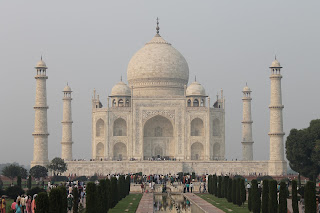This weekend, my friends Johanna, Bridgid and I took the six hour train ride from Bangalore to Chennai. Through a friend of grandmother’s, David Rajan, we were able to stay three nights in a fairly quiet residential area of the city called Anna Nagar. After three months of trying to figure out the loopholes and quagmires of Indian transportation and navigation alone in strange cities, it was refreshing to be shown around by someone acutely familiar with the city and fluent in both English and Tamil, the local language.
David took us to two of his mission centers, both in rural towns a few hours outside of Chennai. The first is a Christian school and we were able to interact with the children. Fortunately for them, their classroom conditions and level of instruction is far superior to what the kids in my school are used to.
The second sight is currently under construction. We got to witness the grueling process of constructing a building, help cook the meal for the workers, go on a tour through the nearby village, and take a boat ride to see the fishing villages from the water.
As we drove through the Indian country side, I was struck by how unexpectedly beautiful India is. It’s a far cry from Maryland’s abundant rivers, deciduous tress, and manicured lawns. It’s wild, lush, and is characterized by a vivid green only found in the jungle. The liquid rice paddies backdropped by the palm trees and blazing sun are entirely dissimilar from what I conventionally understand to be beautiful. This is just one example of the lesson I have been learning. Most of the things that irritated me about India were things that were simply different from what I was used to. They didn’t make sense to me because I was unfamiliar with the habits, behaviors, thought processes, and beliefs in India. But now I realize that this fact does’t necessarily make those things wrong. It takes a lot of perseverance and humility to allow your preconceived ideas to take a back seat, but refusing to do that means sacrificing the ability to truly see a place for what it is and not what you want it to be.
“I recollect it was settled by general consent that India was quite a misrepresented country, and had nothing objectionable in it, but a tiger or two, and a little heat in the warm part of the day.”
David Copperfield, Charles Dickens

















